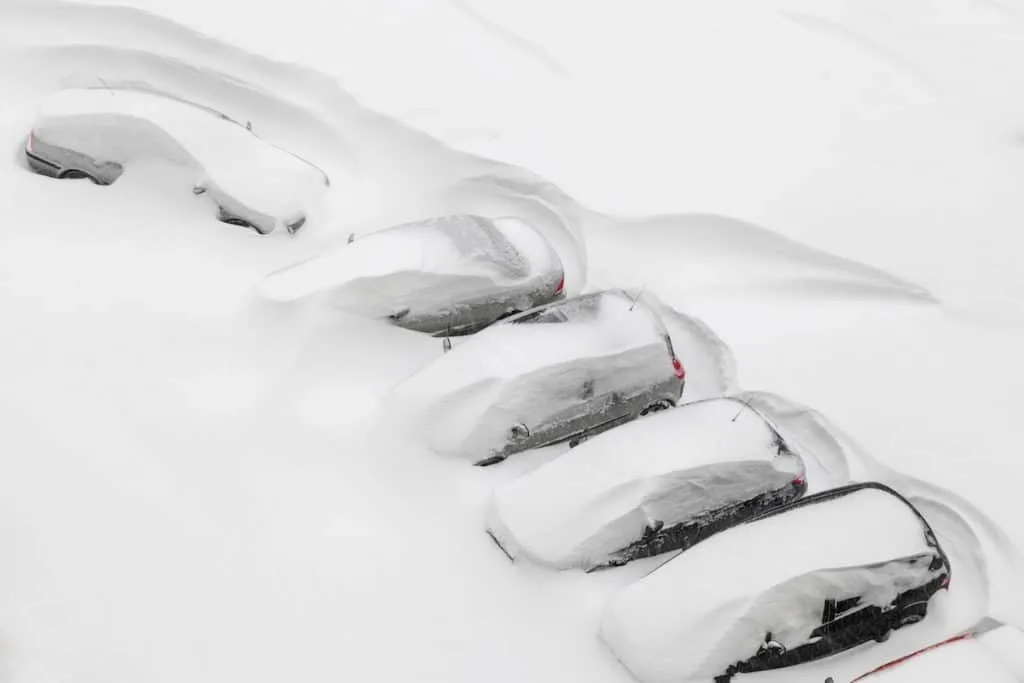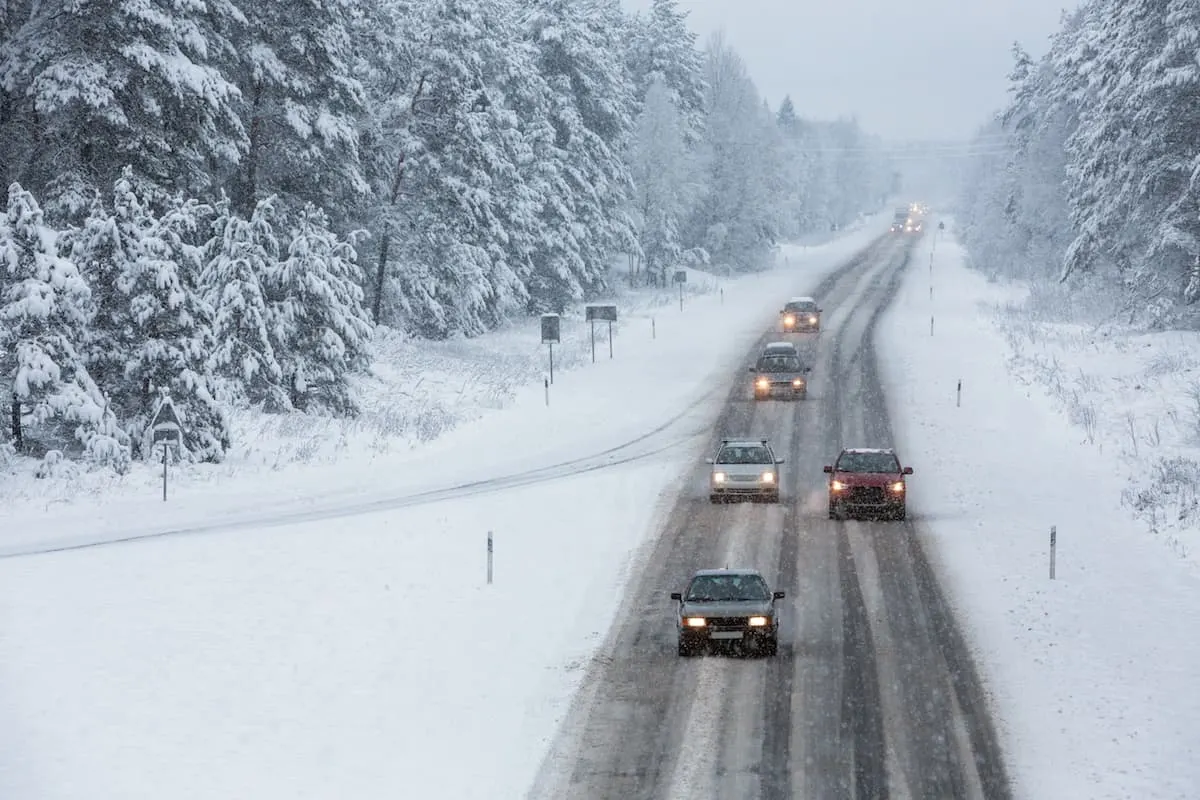Seeing falling snow in the winter can be a beautiful sight to see, and it also makes it feel like the Christmas season is coming. But although snow can be cool to see, and fun to play in, it also means that you will have to drive in it.
If there is only a small amount of snow falling, this will not make a very big difference in the way you drive. But, if there are multiple inches of snowfall, then you will likely have to take certain measures to ensure that your car is able to drive in it.
So, how much snow can you drive in? The amount of snow that you can drive in will be determined by the vehicle in question, whether or not it has four-wheel or all-wheel drive, the tires on the vehicles, and your ability as a driver.
Depending on the size of your car, the ability to drive in snow may not be as easy as you thought. Plus, if you aren’t used to driving in snow, it can be a lot more difficult for you.
To make the decision of whether to take your car out in the snow easier, we will detail the things to look at before you begin driving.
We will also discuss whether your car will be able to safely get you from point A to point B with the size, clearance, and tires that it has.
Safety First
In times when snow is falling hard, most areas will tell its residents to stay home unless absolutely necessary. With multiple inches of snow, it can be tough to see, which will increase the risk of accidents drastically.
However, this is fairly uncommon in most situations. This might only happen when there is a major storm that forces the city to fall behind on snowplowing the streets.
But it is important to say that if you are not used to driving in the snow, then you should be extra careful when doing so.
Whether or not you are comfortable driving in the snow, there is still a higher risk of an accident, and you should drive with that in mind.
Snowplowing
Most cities and areas that have annual snowfall will be prepared with snowplows during times of heavy snow. This will help make it safer for you to drive on the road since the snow level on the roads will be less than the area around it.
However, you should not count on this to be done every time you need to drive somewhere. Although these snowplows might do a lot of work to make the city safe to drive in, you want to make sure that your car is still able to drive in deeper snow.
This is to ensure that if you come across a deeper patch of snow along the way, which you can’t always avoid, that you will be able to drive through it.
How Much Snow Can Your Drive In?

Well, this depends on the vehicle you drive because it depends on the ground clearance your car allows, how much gas you have, and the types of tires that are on your vehicle. All of these factors will affect your ability to drive in deeper snow.
The clearance that your car has will determine the amount of drag that you will deal with, and your tires will decide how much traction you have on the road. If you have low clearance and summer tires, then you will not be safe on the road.
The amount of gas will also make a difference because it takes a lot more gas to get through thick areas of snow. If your car won’t be able to get to where you need to go and back with the gas you have in the tank, then you could get stuck on the road.
But, if you have snow tires, a high clearance, and a full tank of gas, then you will be able to drive in a high amount of snow. So, how do these factors affect your ability to drive in deep snow?
Ground Clearance
The clearance that your car has depends on the height of the car. The ground clearance measures the lowest point of the car to the ground, which gives you the inches of snow that you would be able to drive over easily.
Most cars have between 4 to 8 inches of clearance, while higher trucks can have closer to ten inches. Having thicker tires will also give your clearance a small boost if your vehicle has them.
If the amount of snow in inches outside is around five inches and your car has a six-inch clearance, then you will have room to drive over it without dragging. Dragging is when the bottom of your car hits the top of the snow and drags it along with it.
Dragging can be tough on your vehicle because it causes it to need more power to maintain its speed, and could cause you to get stuck if snow builds up enough to stop your tires.
What Type of Snow Is On The Ground
Not only does the amount of snow matter to your vehicle, but the type of snow will also affect it. If snow is newly fallen and soft, then you will be able to get through much more of it than your clearance would normally allow.
If the snow has fallen over the past few days and high winds have packed it together in wet conditions, then it will be much harder on your vehicle. In this case, you will really need to ensure that your car has clearance for the road before heading out for a drive.
Wet snow will cause some lower vehicles to get stuck a lot easier, and will even make it tougher to drive a higher vehicle through it.
If you are finding that leaving the driveway and going down the street leaves deep tire marks in the snow, you may want to skip the trip and stay home to prevent yourself from getting stuck farther down the road where there is more snow.
What Tires You Have
The type of tires that you have on your car will also make a difference in how much snow you can travel in. Having larger snow tires will be the best bet because they are made with a deeper tread that helps you get through more snow.
These tires are made specifically for snow and will work even better than all-weather tires. This is because of the wider and deeper tread that sticks to the snow and works its way through it better, even when the snow is wet and packed together.
Although all-season tires are made for most seasons, they are often not enough to have in heavy snow. This is because they do not work to break up the snow as the tread on snow tires do.
Gas In The Tank
Something that not every driver will think about is the fact that their gas doesn’t go nearly as far in heavy snow. It takes a lot more gas to do small trips to the grocery store and back because your car works so much harder to drive as usual.
You tend to use almost three times as much gas in snowy weather than you would on a sunny day. So, a small amount that would normally get you through multiple short trips will not last as long.
This could cause you to get stranded on the way there or back if you don’t keep up with filling your gas tank. You will use up more than usual just driving a short distance, and you could run out of gas even with a higher amount in the gas tank.
So, having less will determine if you have enough in the tank to get to where you need to go. If not, you may have to make an extra stop at the gas station.
Driver’s Ability
The final thing that will determine how much you can drive in is your confidence while driving in the snow. If you have driven in the snow often, then you might feel more comfortable making a trip in heavy snow.
If you haven’t had much experience with driving in heavy snow or any amount of snow, then it could be a bit scary to do. Also, you need to know how to use your speed to help you keep traction.
Sometimes, you will need to speed up to gain control of your vehicle, while other times you will need to slow down. Knowing how to drive in snowy weather is important to keep you safe, and if you don’t know how then you could be risking your safety.
Practicing in small areas with snow will allow you to learn how to remain in control of the vehicle on the snow even when you start sliding. This practice time will make you more confident on the road and make it safer for you and others to drive on the snowy ground.
Final Words
Driving in the snow is not always easy, especially when there is very heavy snow. But learning how to tell if your car is up for the job is one way to keep yourself from getting stranded on the side of the road in the cold.
Knowing the ground clearance of your vehicle, getting snow tires, keeping your gas tank filled, and practicing your snowy weather driving skills will get you through more snow than before.
Recommended Reading
Before you go, make sure to also check out these other awesome resources!
